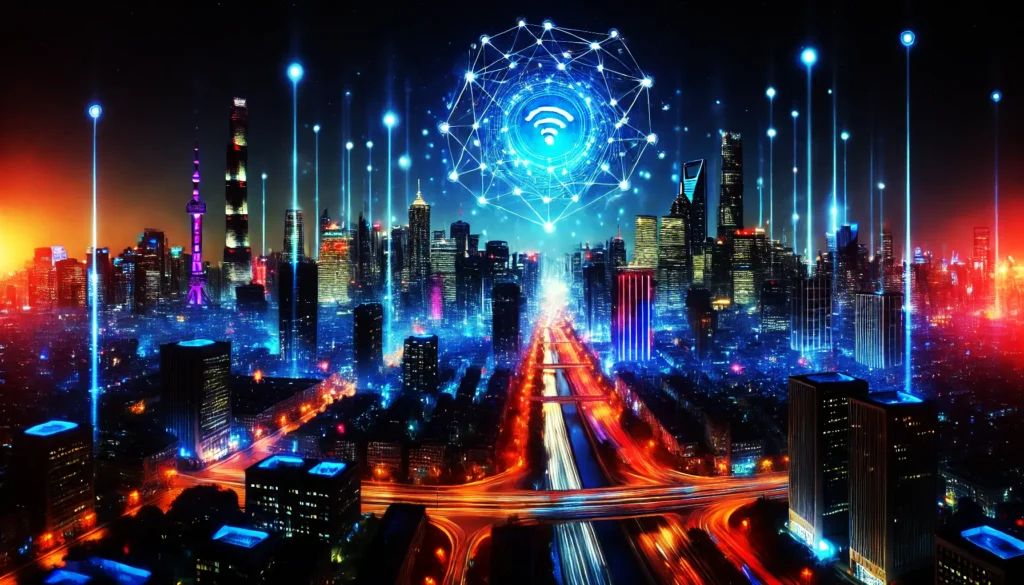
Micro Edge Data Centers: Small Size, Huge Impact
What Exactly Are Micro Edge Data Centers?
Micro edge data centers are compact, decentralized facilities placed close to end-users. Unlike traditional data centers, they don’t sprawl across acres—they might fit in a shipping container or small building.
Their mission? Reduce latency by handling data locally, instead of sending it across the country or globe. That means faster access to cloud services, real-time analytics, and smoother IoT performance.
Think of them as neighborhood hubs powering the digital heartbeat of modern cities.
Why Urban Areas Are Perfect for Micro Edge Expansion
Urban environments generate tons of data. From smart traffic lights to mobile streaming, every second counts. Micro edge data centers thrive here, cutting down data travel time.
They can slot into existing infrastructure—abandoned retail spaces, rooftops, basements. Their flexibility makes them a seamless fit in densely populated areas.
As cities embrace smart infrastructure, micro edges play a critical role in making it work efficiently.
Supporting 5G, IoT, and Real-Time Applications
Micro edge data centers are tailor-made for 5G networks and the Internet of Things. These technologies require near-instant data processing, and centralized data centers can’t always keep up.
With micro edge deployment:
- Smart cars receive immediate traffic data.
- Surveillance systems process video in real-time.
- AR/VR experiences become ultra-responsive.
This local-first approach is what gives edge its “micro” superpower.
Lower Latency = Better Everything
Latency is the silent killer of performance. A laggy video call, delayed sensor update, or slow app response? Often it’s latency.
Micro edge centers slash that problem. Since data travels shorter distances, response times improve dramatically.
End result: smoother experiences across industries—healthcare, finance, gaming, logistics, and more.
The Green Angle: Energy Efficiency and Sustainability
Smaller footprint means less energy overhead. These centers often use liquid cooling or renewables to reduce environmental impact.
Cities can even repurpose waste heat from micro data centers to warm nearby buildings—an emerging trend in circular energy use.
Did You Know?
Some micro edge centers are fully solar-powered and can run autonomously for months at a time.
Next up? We’ll explore how micro edge data centers are powering smart cities, reshaping urban planning, and fueling digital equity in underserved areas. Stay tuned for the big-picture potential.
Transforming Smart Cities from the Ground Up

The Infrastructure Backbone of Smart Urban Environments
Smart cities aren’t just buzzwords anymore—they’re becoming reality. Micro edge data centers form the hidden infrastructure powering this transformation.
From traffic optimization to real-time pollution monitoring, these edge nodes crunch data on the spot. No need to ping a remote server halfway around the world.
Cities like Barcelona and Singapore are already integrating micro edges into traffic lights, utility poles, and transit hubs.
Enhancing Public Services Through Localized Computing
Public services—from emergency response to city planning—depend on timely, reliable data.
Micro edge computing allows:
- Real-time crime detection via connected surveillance.
- Smart lighting systems that adjust to foot traffic.
- Emergency systems that analyze city-wide data in milliseconds.
By processing this data locally, cities improve safety, cut energy costs, and make faster decisions.
Driving Digital Inclusion in Underserved Areas
Not every neighborhood has high-speed fiber or top-tier cloud access. Micro edge data centers help close the gap.
By deploying them in underserved zones:
- Local businesses gain access to fast, reliable cloud tools.
- Students and remote workers benefit from stable connections.
- Community organizations can digitize services without delay.
It’s not just tech—it’s equity in action.
Blending with Urban Aesthetics: Invisible Integration
Worried about bulky tech spoiling city views? Don’t be. Micro edge data centers are designed to blend in.
We’re talking:
- Equipment disguised as street furniture.
- Rooftop installations hidden behind façades.
- Units tucked into transit stations or utility cabinets.
Did You Know?
Some micro data centers are disguised as bus stops or vending machines—with full AI and edge processing inside!
New Business Models for Real Estate and Telecom
There’s a growing market in renting out micro-edge-ready spaces. Property owners, telcos, and ISPs are all getting involved.
For example:
- Building owners lease out rooftop space for edge deployments.
- Telecoms offer bundled 5G + edge computing packages.
- Municipalities monetize public property via long-term micro edge contracts.
Everyone wants a slice of the decentralized future.
Key Takeaways
- Micro edge data centers are foundational to smart city growth.
- They enable real-time data processing for public services and connected infrastructure.
- By placing them in underserved zones, cities promote digital equity.
- Urban design challenges are solved through creative, invisible integration.
Up next, we’ll dive into the security side of things—because with great power comes great vulnerability. Let’s unpack the risks, regulations, and the future of decentralized cyber resilience.
Security Challenges in a Decentralized Data Landscape
More Nodes, More Vulnerabilities
The beauty of micro edge data centers lies in their decentralization—but that also creates a larger attack surface.
Each node becomes a potential entry point. Whether it’s physical tampering or remote cyberattacks, the risks multiply with scale.
That’s why security at the edge must go beyond basic firewalls. It requires:
- Tamper-proof hardware
- Secure boot processes
- Zero trust network architectures
Smaller doesn’t mean safer—it means smarter security is essential.
Edge-to-Core Encryption: Protecting Data in Motion
When data moves from micro edge nodes to central clouds or other devices, it must be encrypted end-to-end.
This includes:
- Transport Layer Security (TLS) for data in motion
- Encryption at rest in local storage
- Authentication for every device interaction
With edge computing, data never sleeps—so encryption must be active 24/7.
Physical Security: Guarding the Small and Scattered
Unlike centralized data centers with round-the-clock guards, micro edge units often operate in public or semi-public areas.
That calls for unique protections:
- Locked enclosures with biometric access
- Vibration and tamper sensors
- Remote shutdown protocols
Cities are even exploring drone monitoring for edge facilities in isolated spots.
Compliance and Governance in a Fragmented Network
Who owns the data at the edge? Who’s responsible for breaches? Governance can get murky in a distributed system.
Governments are stepping in:
- The EU’s Digital Operational Resilience Act (DORA) addresses edge risk in finance.
- U.S. states are pushing for local data processing mandates tied to privacy laws.
Edge operators must track evolving compliance demands across jurisdictions—no small task.
Did You Know?
Some cities are deploying blockchain-based audit trails for edge data transactions, ensuring full transparency and traceability.
Expert Opinions, Industry Debates & Real-World Case Studies
What Experts Are Saying About Micro Edge Expansion
Power Grid Concerns
As data centers become more widespread, their energy demands are under the spotlight. In July 2024, 60 data centers in Virginia were forced offline after a failed surge protector strained the local grid. This incident led regulators to call for urgent updates to national energy reliability standards.
Source: Reuters
Cooling at the Edge
Edge computing introduces new challenges in thermal management. Unlike traditional data centers, these compact units often operate in uncontrolled environments—requiring more adaptive cooling solutions. Experts are pushing for innovative systems that balance performance with energy efficiency.
Source: DataCenterDynamics
Debates & Controversies in Edge Deployment
Community Pushback Against Urban Edge Projects
In Abbots Langley, England, locals opposed a data center proposal, fearing it would damage the village aesthetic and drain power. This tension between innovation and community preservation is echoed globally.
Source: Associated Press
The Edge vs. Cloud Debate
Industry leaders continue to debate whether edge computing will rival or simply augment centralized cloud infrastructure. Discussions at Data Center Dynamics events reveal a divide over how fast and how far the edge should scale.
Source: Data Center Frontier
Journalistic Perspectives: Emerging Narratives
The “Slow Boom” of Micro Edge Centers
Though demand is rising, adoption has been slower than expected. Journalists note that market hesitation stems from uncertainties around ROI, capacity planning, and standardized designs.
Source: Uptime Institute Journal
Edge Computing & Data Trust
With data processed closer to users, privacy and security challenges intensify. Journalists and analysts warn of fragmented compliance efforts and the growing need for trust by design in edge architectures.
Source: IEEE Technology and Society
Case Studies: Micro Edge in Action
Zella DC in Healthcare & Government
Zella DC has deployed modular micro edge data centers across Papua New Guinea’s health sector. One standout case is the Centre for Disease Control, where edge units improved uptime, secured sensitive data, and enhanced real-time analysis—all without requiring grid connectivity.
View Case Studies → Zella DC
VEGA’s Data Security Transformation
Measurement technology leader VEGA implemented Rittal’s MDC safes to meet fireproof, waterproof, and tamper-resistant standards. These micro edge units provided reliable edge compute capability without overhauling existing infrastructure.
Read the Full Story → Rittal
Future Outlook: A Glimpse Into Tomorrow’s Edge-Powered World
The future of micro edge data centers isn’t just more nodes—it’s smarter nodes. Expect AI-powered monitoring, self-healing systems, and energy-optimized orchestration.
We’re heading toward:
- Autonomous edge networks that manage themselves
- Edge marketplaces, where organizations buy and sell local compute power
- Satellite-integrated edges, bridging the digital divide in rural zones
As AI grows and immersive tech like XR expands, micro edge infrastructure will be the bedrock of a hyper-connected, low-latency world.
How do you see micro edge data centers reshaping your city?
Are they a tech utopia or an urban management headache?
Let’s talk—drop your thoughts, questions, or hot takes below!
Why Micro Edge Data Centers Matter More Than Ever
Micro edge data centers are quietly revolutionizing how our cities function. By placing powerful computing closer to where data is generated, they reduce latency, support real-time apps, and strengthen smart infrastructure.
From improving emergency services to closing the digital divide, their potential touches every aspect of urban life. They’re compact, sustainable, and increasingly vital for 5G, IoT, and AI-driven ecosystems.
But with innovation comes responsibility. Securing decentralized networks and navigating regulatory complexities will shape the long-term success of edge computing.
In a world that runs on data, micro edge centers are the unsung heroes behind our faster, smarter, greener future.
FAQs
Can micro edge data centers replace traditional data centers?
Not exactly. Micro edge centers complement traditional facilities rather than replace them. They handle real-time, local processing while larger data centers manage long-term storage, backups, and heavy computation.
Example: An edge center might process video footage from street cameras, while a centralized facility stores months of footage for legal compliance.
How are these edge centers monitored and managed?
Most use remote monitoring platforms that offer health checks, usage stats, security alerts, and AI-based predictive maintenance. Central dashboards allow teams to manage hundreds of distributed nodes from a single screen.
Example: An operator can update software or shut down a unit in another city without leaving their desk.
Are there privacy concerns with data processed locally?
Yes, but they can be addressed. Local processing means less data in transit, which can improve privacy. However, regulations like GDPR or HIPAA still apply, so compliance frameworks are essential.
Example: A hospital using edge processing for patient monitoring must ensure data is encrypted, anonymized, and stored in compliance with healthcare laws.
Resources
Articles & Reports
- Uptime Institute – The Edge Data Center Opportunity: Explores edge infrastructure evolution, risks, and strategic deployment.
- IDC FutureScape Report – Edge Computing Predictions: A must-read for tech trend forecasts (available through tech libraries or IDC).
- Schneider Electric – Edge Computing 101 Guide: Practical insights on infrastructure design and energy efficiency.
Industry Organizations
- Open Compute Project (OCP) – Focuses on open standards for edge and hyperscale computing hardware.
- Edge Computing World – edgecomputingworld.com: Event series and resource hub with case studies, webinars, and whitepapers.
Research & Standards
- ETSI Multi-access Edge Computing (MEC) – etsi.org: Technical specifications and architectures.
- IEEE Edge Computing Initiative – Offers journals, conferences, and academic research at ieee.org.
Tools & Platforms
- StackPath – Real-world edge CDN services with developer tools: stackpath.com
- EdgeX Foundry – Open-source platform for IoT edge applications: edgexfoundry.org